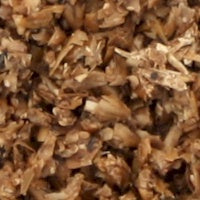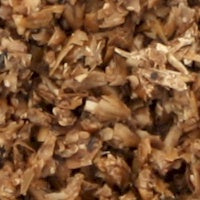Brewers Grains
Brewers Grains
- DM:23.0%
- Protein: 25.0%
- ME MJ/kg:11.7%
- Fibre: 17.0%
- Oil: 7.5%
- Ash: 4.0%
Couldn't load pickup availability
The first stage of brewing involves the steeping of malted barley in hot water to extract soluble sugars. The resulting sugary liquid ('wort') is drained off to be fermented into beer leaving a residue known as Brewer Grains. This nutritious feed material is fibrous and contains concentrated sources of protein and oil. It is moist, pale to mid-brown in colour and has a pleasant malty aroma.
Feeding
As with all feeding stuffs, introduce gradually over a 7-14 day period. Brewer Grains comprise an excellent feed for ruminants and contains a good source of digestible fibre and heat-treated protein. Although often used as a forage extender, it provides valuable nutrients, which can also replace concentrate feeds.
Typical Daily Feeding Rates
Dairy & Beef Cows 5 - 24kg, Beef Finishers 5 - ad lib, Stores & Dairy Replacers 5 - 15kg, Sheep 2 - 4.5 kg, Lambs 1 - ad lib.
The precise quantity of the above feeding rate are dependent on the quality of the other feeds in the ration.
Availability
Now available all year round.

Typical Analysis
| Dry Matter | 23.0 |
| Crude Protein | 25.0 |
| DCP | 20 |
| ME | 11.7 |
| Crude Fibre | 17 |
| Oil (EE) | 7.5 |
| Ash | 4 |
| NCGD | 60 |
| NDF | 56.5 |
| Starch | 5.5 |
| Sugar | 1.5 |
| Starch & Sugars | 7 |
| FME | 9 |
| Salt | 0.6 |
| Calcium | 0.4 |
| Total Phos | 0.5 |
| Av Phos | - |
| Magnesium | 0.2 |
| Potassium | 0.05 |
| Sodium | 0.05 |
Recommended feeding
(per head / day)
Limits to Usage
Brewers Grains possess few limiting factors and can be fed to cows at 7 - 10kg / head / day, beef cattle ad-lib and ewes 3 - 4 kg / head /day.
Storage / Processing
References / further reading
Disclaimer
Feeding rates are estimates, and other factors, such as animal health and environment, can have a greater impact on how animals perform. There is no guarantee that animals will perform as expected if fed the suggested rates. Rations should be balanced to provide enough energy and protein for animals, and they should include enough forage to keep the rumen healthy. Animals also need access to fresh water at all times.
- Choosing a selection results in a full page refresh.
- Opens in a new window.
